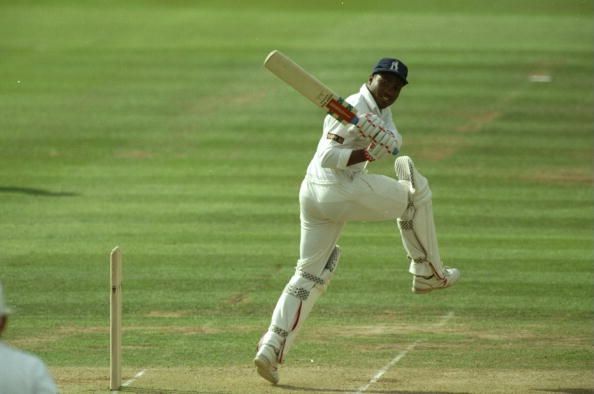
The Five Most Beautiful Sights in Cricket
Those that craft say it is a primal urge, but you tell me what is natural about being aesthetic. My attempts at creating beautiful things on the sports field usually meet with the fate that Jugal Hansraj-directed, Uday Chopra-acted films meet at the box office. I am of course trying to say that they meet with unmitigated disaster. The cross from the right flank always crashes into the side-netting, the drop shot falls pathetically on my side of the net, what should have been an effortless punch through cover ends with an uprooted off-stump. In Frank O’ Connor’s delightful little story, The Man of the House, the ten-year old narrator, as he watches his class-mates walk to school on a day when he has the pleasure of staying at home to care for his sick mother remarks, “I wasn’t a malicious child, by any means, but I liked to be able to take out my comforts and study them by the light of other’s misfortunes.” Well, the inverse also holds true for failed sportsmen. Our tribe is prone to study our own misfortunes in the light of accomplished sports-people’s spectacular successes. The contours of the beauty they build are put into sharper relief by the ugliness of our own pursuits. So, inspired by cricinfo’s wonderful series “What’s the best sight in cricket”, I’ve been tempted to draw up my own list of the spectacles that have tickled, tingled, amazed me in this heartbreak of a sport. My list, however, will centre around individuals. I can offer no further justification for this but for the fact that, as they say, cricket is very often the most individual of team sports.
1. Lara’s one-legged swivel
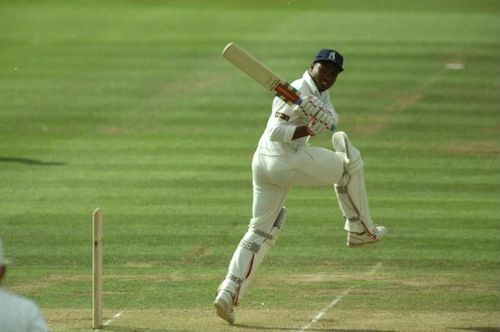
Brian Charles Lara is to a discussion of the visual delights that cricket has to offer what Picasso is to a treatise on Cubism. I make this analogy, of course, by design. The artist from the Caribbean, with a penchant for amassing runs and getting into disputes with the West Indies Cricket Board (wait, isn’t there someone like that around these days too?), used his bat like a brush. His strokes would cover all areas of his chosen canvas. There was the charge down the track against the spinners, the hook against the fast bowlers, and that cover drive against anyone. However, my favourite was the swivel shot he’d play off his hips against pacers. He’d wind up that ever-lasting back-lift just in time to lift his front leg and swivel, gaining enough momentum to pick the ball off his hips and send it crashing to the boundary. Admittedly, he played less and less of this shot in the later stages of his career, but isn’t the quality of great art its endurance in the life of the mind?
2. Waqar’s in-swinging yorker
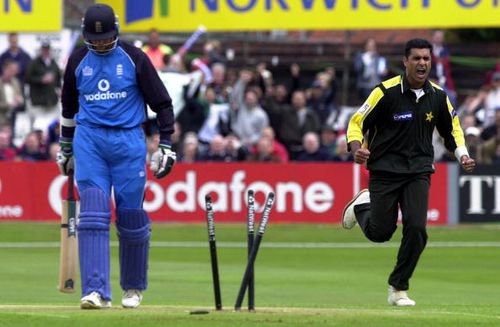
Every brown boy growing up in the 90s, on dusty fields from Karachi to Kanpur to Kandy, would have at some point tried to re-create Waqar bhai’s toe-crushing beauties. Arms just a little away from the body before steaming in, the clean jump, the release, and the smooth follow through. When the televisions camera would zoom in on Waqar’s grip as he held the ball, we’d frantically try to replicate them on our rubbers balls, taped around the seam in the hope of generating reverse swing on the pattas of our concrete jungles. We’d watch with wonder the trajectory of the ball as it would miraculously come into the batsman, and cramp him for space. When the timber would shake (in the phrase so beloved of commentators) and Waqar bhai would pump his fists in wild delight, an entire generation of young men would learn their first lessons in beauty.
3. Azhar’s leg glance
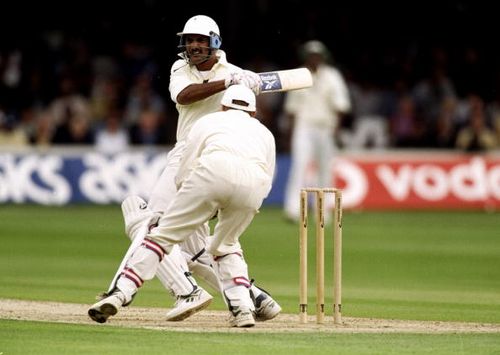
In days before bio-mechanists and fitness training and Hawk Eye, there used to be chap named Mohammad Azharuddin. Now, he is many things to many people. Two-bit politician, thrower-away of games, famed exponent of the use of the phrase “the boys” to refer to his team in post-match presentations ceremonies, possessor of the quintessential Hyderabadi lilt. But to many of us (especially those of us who came well after Jaisimha’s time), he remains the most accomplished executor of that most wondrous of strokes, the leg-glance. The left foot would come slightly forward, there’d be the inevitable and imperceptible flick of the wrists, the ball would roll to the on-side fence. Simple as that. Deadpan, he’d walk to the centre of the pitch, collar at attention, distinctive white helmet on head and fist-bump the lucky fellow at the other end. His subsequent fall from grace was indeed tragic, but for some of us he remains the Last Nizam.
4. Sanath’s slash over point
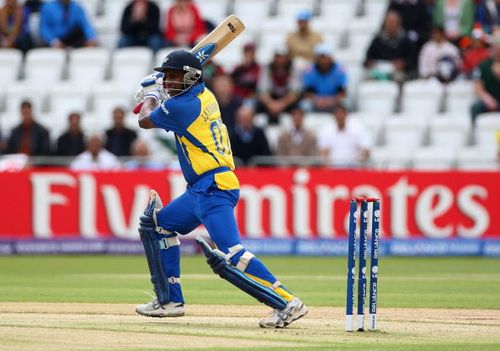
Sanath Jayasuriya’s batting in general and his slashes over point in particular would answer an uncomfortable question that has, over the course of history, plagued men with far more ruthless designs like Hitler: can destruction be beautiful? His elaborate pre-ball routine of pad-adjusting, elbow-guard touching, helmet holding etc. was our cue to anticipate the carnage that would ensue. The amount of height and force he generated on that shot, even on a perfectly good ball pitching just outside off, was typical of his free-flowing batting. Though I have other images to remember him by (including one of him impossibly holding ten different-flavoured ice creams between his fingers on billboards all over his home-town of Matara), this will be the definitive one: slash, bang, next.
5. The Master’s straight drive
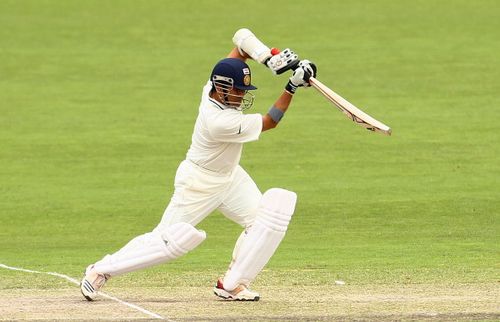
For me, trying to write about Sachin Tendulkar a.k.a the Master is like solving the objective part of a question paper. There is only one answer. If you get it right, full marks. If you get it wrong, minus marks. If you leave it blank, no marks. To be guaranteed full marks, one must write about Master’s straight drive. When he plays that shot, he follows the ball right through. Pitching on middle, yes. Pitching on middle and off, yes. But I’ve seen Master play that shot even when its pitching a little outside off! Getting behind the ball, head steady, and with a straight bat. He normally uses the shot to maximum effect in the early overs. As a consequence, he has left men like Glenn McGrath, Wasim Akram and Courtney Walsh scratching the heads, probably trying to figure what the mathematical probability of perfectly bisecting the gap between mid-off and mid-on is.
On to the honorable mentions, then.
Saaed Anwar’s cover drive
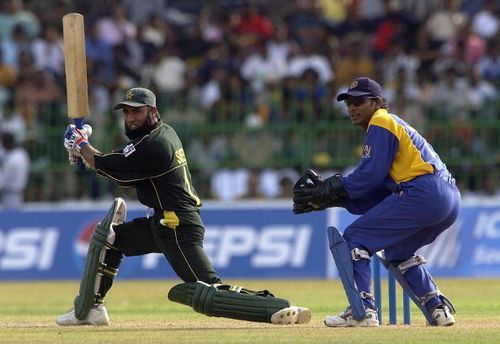
In his paean to the cover drive, Rob Steen says that it is “actually less art than creative science”. Be it art or science, Saeed Anwar mastered the art of the cover drive. The thing about sports is that in moments of individual magic, we are all neutral. We needn’t even hide our grudging appreciation. The moments after Anwar’s cover drive (never has a bent elbow seemed so poetic) were such. I remember that even during THAT innings at the Chepauk, every cover drive of his was greeted with a “Kya shot tha, bhai”, by my rabidly patriotic uncles.
Carl Hooper’s late cut
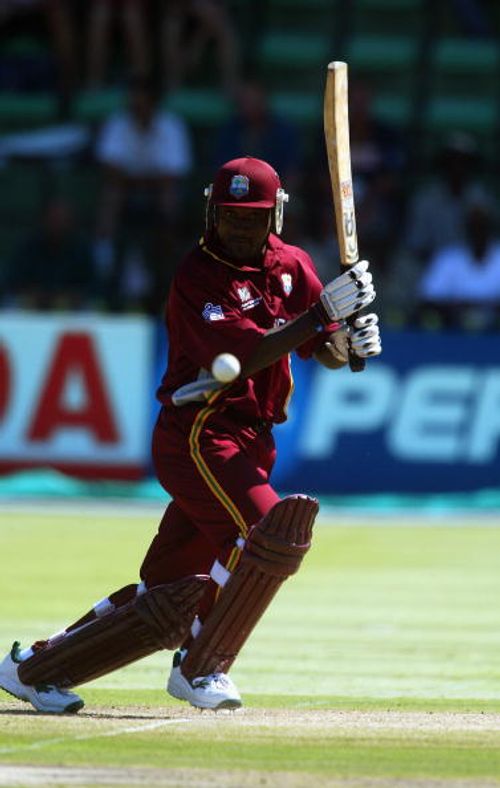
Hooper’s languorous late-cut was popular in my circles since it was a shot that could be used to great effect in eight-a-side underarm games in a Bombay building compound. With the field ahead of the wicket packed, we’d wait for the ball to almost pass the bat, and then try to delicately help it between the keeper and a fielding position that can only be described as sixth slip. Most times, instead of running away to the wall at the back of the compound (just like Cooper’s cuts would run away to third man), we would find ourselves picking up the bails that the ball (or, even more embarrassingly, our own bats) dislodged.
Dada’s loft against the spinners
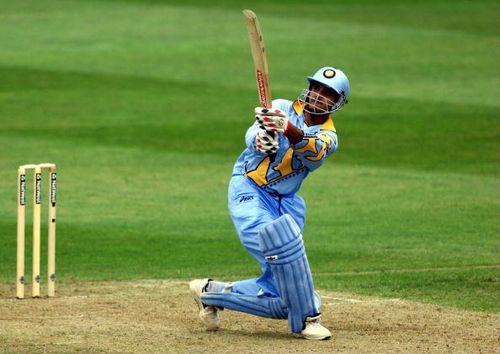
The definitive image that I have of Sourav Ganguly is him giving the charge to the Lankan spinners in his 183 at the 1999 World Cup. Dada would read the turn on the ball, come dancing down the track and majestically loft it into the rafters. All the fielder at deep mid on could do was follow the trajectory of the ball, and signal whether a new one was needed. He wasn’t called Maharaja for nothing. This shot was characteristic of his imperiousness.